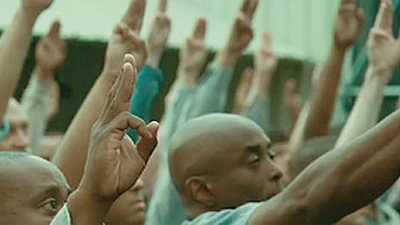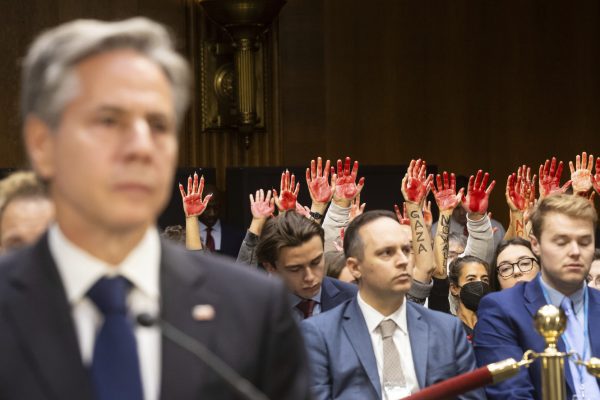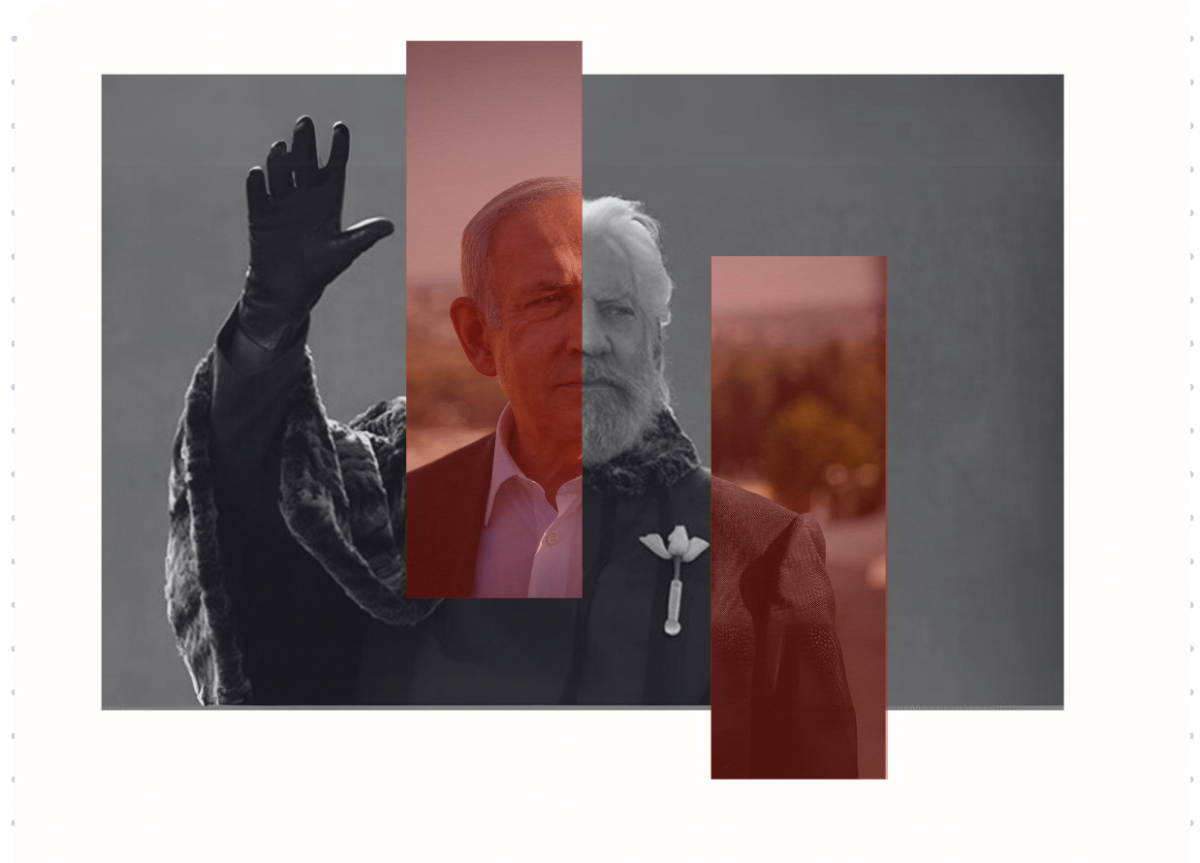All views and opinions expressed in this article are those of the author, and do not represent the Roar as a whole.
“Dystopian literature is always commentary on the present, but is set in the future so people are not offended by their lack of awareness”
As most of the world is shocked by the events unfolding in the Middle East, the US seems particularly divided now more than ever. With ripples of the situation reaching American shores, the Palestinian cause has seen an influx in support within the population, but government officials have a very different stance. A rise in anti-war sentiments, threats of tax strikes and national desperation for change is amplified by the 38 million Americans living below the poverty line and 60 percent living paycheck to paycheck (US Census Bureau). To a generation raised on dystopian young-adult novels, the desperation of the masses and vast disconnect between the people’s demands and the government’s actions seems eerily familiar.
In almost comedic, but cruel timing, the newest addition to the Hunger Games saga, The Ballad of Songbirds and Snakes premiered in cinemas nationwide. Grossing $72.8 million, it brought back mass attention to the novels and films, reintroducing discussions about their relevance to the modern day political climate. The central theme of the Hunger Games novels and movies surrounds an oppressive authoritarian government enforcing strict blockades on its citizens. Using force, division, resource exploitation and censorship, the wealthier residents of the Capitol live lives of immense luxury on the backs of the poor citizens of the districts. As the storyline of the films progress, the citizens of the oppressed districts oppose their collective punishment, revolting against the Capitol in efforts to be free from subjugation and to remove their oppressors.
On Oct 7, militant group Hamas broke out of the Palestinian territory of Gaza, launching an attack on Israel. The initial Israeli death toll of 1,400 lives lost was revised down to 1,200 by Prime Minister Benjamin Netenyahu. Of the 1,200, a third were Israeli military and the remainder were civilians. Hamas reportedly took roughly 239 hostages back into Gaza. In retaliation, Israel has launched the deadliest bombing campaign against Palestinians since the 2014 Gaza war. 16,000 Palestinains have been killed, 6,000+ of which were children [Gaza Health Ministry]. The IDF reported 60+ Hamas Militants killed. The unproportionate response by Israel and the 99.8% civilian death rate led to people labeling the events as a Genocide against Palestinains and a continuation of the 75 year ethnic cleansing campaign conducted by Israeli nationalists.
Millions of Palestinians today live under siege, with their electricity, food and water controlled by Israel. Checkpoints and walls in the west bank heavily police the Palestinians who live under a system of apartheid [Amnesty International]. The territory of Gaza, also is present under siege, and its residents have no freedom of movement. With boundaries that forbid Palestinians to leave Gaza, it is commonly referred to as an open air prison for its 2.1 million residents, of which 800,000 are children.
On seeing the parallels and similarities present between the Palestinian struggle and that of the Hunger Games, Netizens took to Tiktok to express their opinions on the matter, and to remind people about the hypocritical stances they hold, claiming that the people who support genocidal regimes in real life, are no better than the Capitol and its citizens. In an interview with the New York Times, the author of the novels, Suzanne Collins, shared “I was flipping through the channels one night between reality television programs and actual footage of the Iraq War, when the idea came to me.” She discussed the desensitization American masses were experiencing and the dystopian ignorance that people in the Global North showed.
In the Hunger Games, children from the districts are ‘reaped’ into a symbolic game to satisfy the bloodlust of the Capitol and to punish the districts. This form of collective punishment targeted children who were not even alive during the initial rebellion detailed in the story, but had to carry the sentence of their community. People detailed how children in Gaza face similar situations as they undergo deadly military campaigns spearheaded by Israel and are targeted for crimes they never committed. Similarly, the tributes in the hunger games had to perform for sympathy amidst their struggles for help from the outside world. This dehumanization can be seen as videos flow out of Gaza of parents holding up the corpses of their children for the cameras, crying for help from the western world.
Symbols of resistance in the Hunger Games can also be tied back to the conflict today. Across the world, supporters of the Palestinian cause brand Keffiyehs and drawings of Watermelons, both symbols of Palestinian resistance. Similar to the whistles and salutes of the rebellion in the Hunger Games, protestors show solidarity and are actively criticized for their display. With recent news of 3 young men wearing keffiyehs, shot and left critically injured in Burlington, VT this thanksgiving weekend, these parallels are only strengthened. Katniss Everdeen, initially a victor of the hunger games, later documented the terror inflicted by the Capitol to show the rest of Panem. She acted as a symbol, the Mockingjay, inspiring others to take action. She was quickly deemed a terrorist by the Capitol. Today, youth in Gaza document the same, with citizen-turned-journalists: Motaz Aziza, Plestia Al Aqad, Bisan Owda and others showing the western world the terrors inflicted on them. They too, were quickly demonized, with Israel accusing them of being affiliated with the Hamas extremist group. A jarring similarity is that both Katniss and Bisan open their videos saying they are still alive, indicating the dangers of their situations.


The most compelling similarity between the two however was the monologue delivered by Katniss following the bombing of a hospital.
“I want to tell the rebels that I am alive. That I’m right here in District Eight, where the Capitol has just bombed a hospital full of unarmed men, women and children. There will be no survivors. I want to tell people that if you think for one second the Capitol will treat us fairly, you’re deluding yourself. Because you know who they are and what they do. This is what they do and we must fight back! I have a message for President Snow. You can torture us and bomb and burn our districts to the ground, but do you see that? Fire is catching and if we burn, you burn with us!”
The monologue is particularly impactful since on Nov. 10, Israeli forces bombed Al-Shifa Hospital in Gaza killing 400 injured civilians. The language and rhetoric used to justify the bombings in both cases also sound similar, with President Snow accusing all citizens of Panem guilty by association, and the IDF making similar claims.
Israeli newspaper, Haaretz, recently confirmed that IDF Helicopters were responsible for 112 of the Israeli civilian lives lost due to difficulties in distinguishing themselves. IDF soldiers testified that their own superiors urged them to fire indiscriminately, even if it meant incurring casualties of their own civilians. “The commanders in the field made difficult decisions, including shelling houses on their occupants in order to eliminate the terrorists along with the hostages.” [Haaretz]. These casualties were also blamed on Palestinian resistance. In parallel, another recurring theme in the Hunger Games was using the rebellion as a red herring for self-casualties at the hands of the Capitol.
The novels and films also comment on the privilege of neutrality and ignorance. While the people of the districts starve and scrounge for food, the citizens of the Capitol revel in lavish flamboyant parties and use special drinks to throw up the food they have consumed so they can continue eating more. The class divide and greed is criticized in the novels and addresses the class divide experienced today. Snapchat users pointed out the contrast between Israeli and Palestinian citizens’ Snapchat stories using the app’s SnapMap. Where one side shared videos of nightclubs, parties, restaurants and cars, the other showed destroyed buildings, starving children and dusty possessions grayed under the rubble. With the United States’ unconditional support for Israel, Netizens claim that it is also the duty of the American citizens to help, since their tax dollars fund the atrocities committed. A particularly stark contrast can be seen as Americans gathered to watch the Macy’s Thanksgiving Day Parade on the 24th of November was disrupted by Pro-Palestinian protests. Protesters were boo-ed and criticized which only highlighted the willful ignorance displayed by the citizens of the Empire when shown the actions of their governments.
Fictional allegories of real world conflicts set in the future act as a digestible form of entertainment for people in the Global North; it allows them to build a world similar to ours, without tainting their conscience, having to make difficult choices, or aligning themselves with a side. However, in an era of rapidly accessible information, global conflicts reach our doorsteps in seconds. With growing distrust in big media companies and news networks, our generation turns to primary sources flowing out of warzones and are met with an uncomfortable urgency to align themselves with a side. In choosing neutrality at moments like such, readers become the very citizens complicit upholding the dystopian empires they claim they are against.


